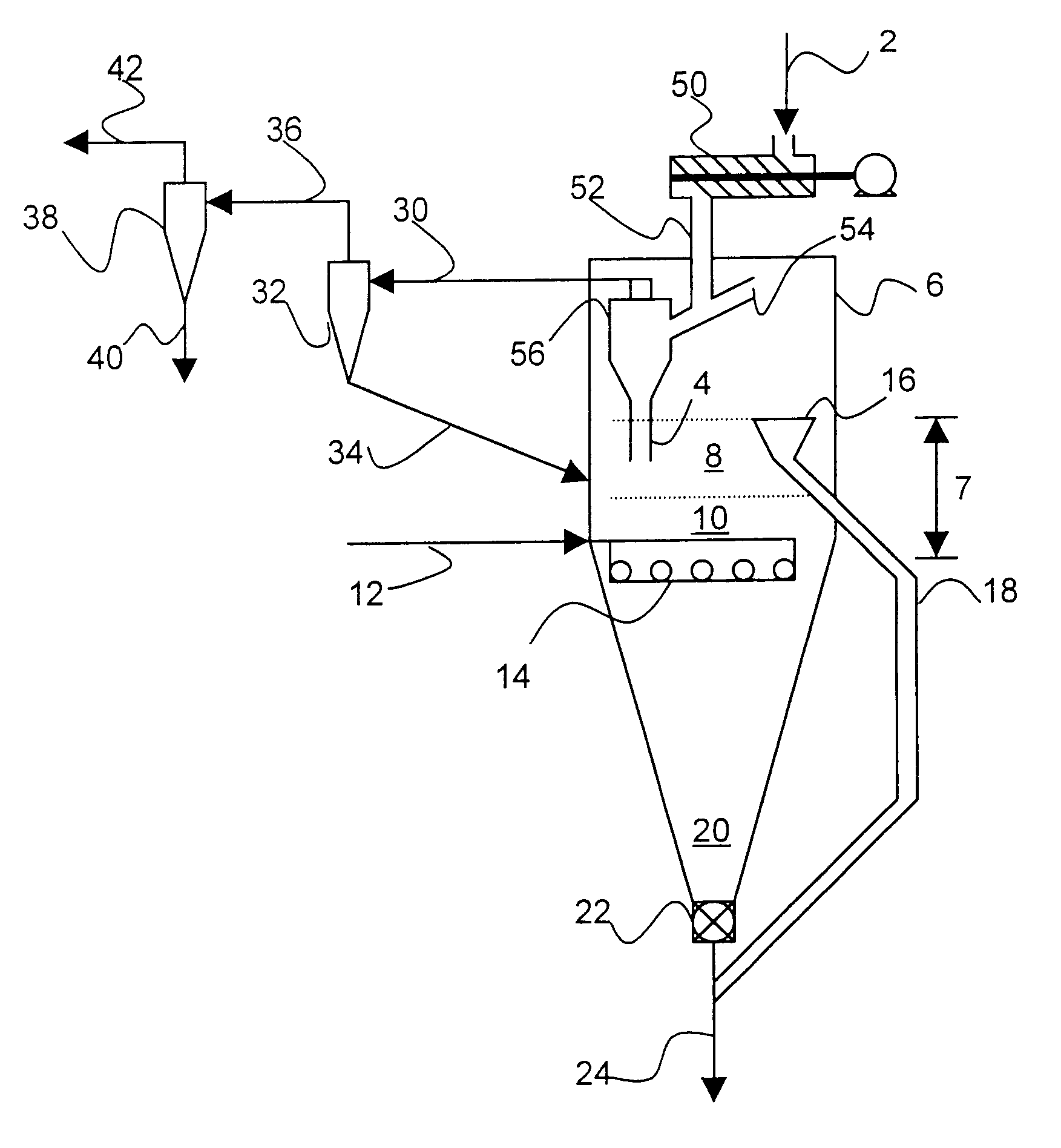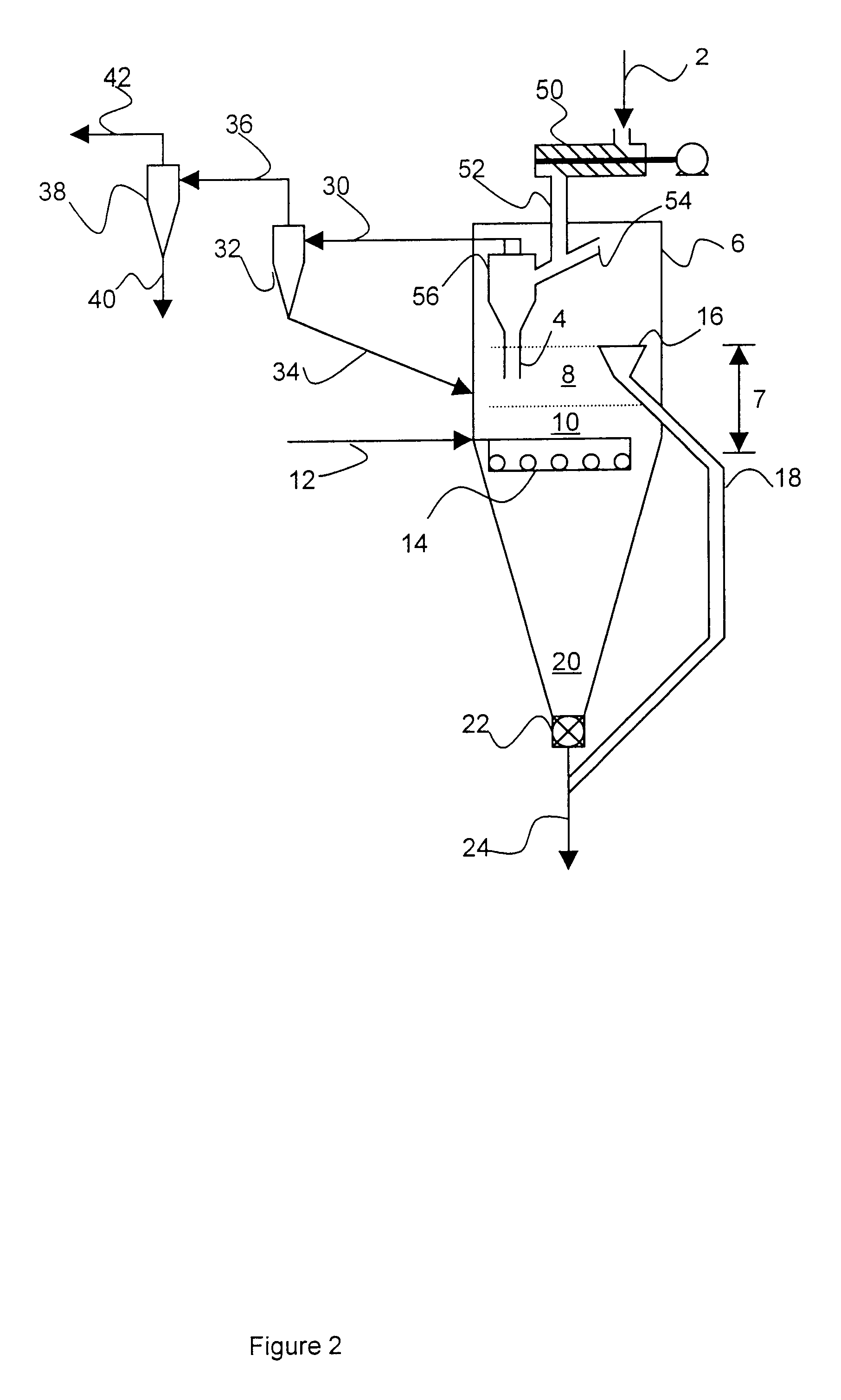Method and apparatus for reducing iron-oxides-particles having a broad range of sizes
a technology of iron oxides and particle reduction, applied in shaft furnaces, metal processing, furnaces, etc., can solve the problems of process not teaching the use of moving bed reactors, loss of products, pollution disposal,
- Summary
- Abstract
- Description
- Claims
- Application Information
AI Technical Summary
Benefits of technology
Problems solved by technology
Method used
Image
Examples
examples
In pilot plant tests of structure most like FIG. 1, the following results were obtained:
From this table, it can be seen that the percentage of fines available for the fluidized bed is 31.1712 (in the 0.00-0.841 size range) for test C1, and 31.4338 for test C2. A velocity of 0.6 m / s were needed to suspend 0.5 mm particles and 3.8 m / s to blow this size out of the reactor (while a velocity of 2.8 m / s suspended 5.0 mm particles and 12 m / s to blow these away). From the foregoing table the calculated estimated distribution of particles for test C2 would be 21.7% for 0.00-0.50 mm and 78.3% for 0.50-5.00 mm.
The following is typical of the reducing gas used during the pilot plant testing:
PUM
| Property | Measurement | Unit |
|---|---|---|
| Temperature | aaaaa | aaaaa |
| Temperature | aaaaa | aaaaa |
| Length | aaaaa | aaaaa |
Abstract
Description
Claims
Application Information
 Login to View More
Login to View More - R&D
- Intellectual Property
- Life Sciences
- Materials
- Tech Scout
- Unparalleled Data Quality
- Higher Quality Content
- 60% Fewer Hallucinations
Browse by: Latest US Patents, China's latest patents, Technical Efficacy Thesaurus, Application Domain, Technology Topic, Popular Technical Reports.
© 2025 PatSnap. All rights reserved.Legal|Privacy policy|Modern Slavery Act Transparency Statement|Sitemap|About US| Contact US: help@patsnap.com



